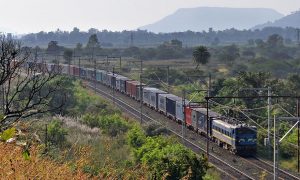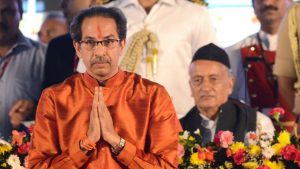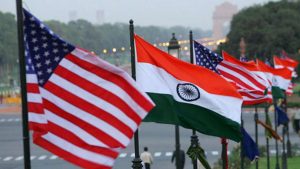
Thursday, September 17, 2020
The HINDU Notes – 17th September 2020
THE HINDU NEWSPAPER IMPORTANT ARTICLES 17.09.2020
Wednesday, September 16, 2020
Daily Current Affairs, 16th September 2020

1) International Day for the Preservation of the Ozone Layer

•The United Nations observes 16th September every year as International Day for the Preservation of the Ozone Layer. The ozone layer is a fragile shield of gas which protects the Earth from the harmful portion of the rays of the sun and thus help in preserving life on the planet.
•The theme of the day for 2020: “Ozone for life: 35 years of ozone layer protection”. It marks 35 years of the Vienna Convention.
2) Union Cabinet approves Haryana Orbital Rail Corridor Project

•The Cabinet Committee on Economic Affairs, chaired by Prime Minister Shri Narendra Modi, has given its approval to the Haryana Orbital Rail Corridor Project from Palwal to Sonipat via Sohna-Manesar-Kharkhauda. The project will be implemented by Haryana Rail Infrastructure Development Corporation Limited (HRIDC) and the estimated completion cost of the project is Rs. 5,617 crore.
3) Maharashtra Govt launches ‘My Family, My Responsibility’ campaign

•The Chief Minister of Maharashtra, Uddhav Thackeray has launched a state-wide campaign titled, ‘My Family, My Responsibility’, to curb the spread of coronavirus pandemic. The campaign will be conducted in two phases. The first phase of the campaign will end on October 10 and the second phase will take place between October 12 to 24.
4) India & US conducts 10th DTTI Group Meeting virtually

•The 10th Defense Technology and Trade Initiative (DTTI) Group Meeting was held virtually by the Indian and U.S. Defense Delegations. The meeting was co-chaired by Mr. Raj Kumar, Secretary, Defence Production, from the Indian Ministry of Defence and Ms. Ellen M. Lord, Under Secretary of Defense for Acquisition and Sustainment, from the U.S. Department of Defense. During the meeting, the co-chairs signed a Statement of Intent (SOI) that declared their intent “to strengthen our dialogue on defense technology cooperation by pursuing detailed planning and making measurable progress” on several specific DTTI projects.
•DTTI Group meeting aims to bring sustained leadership focus to the bilateral defense trade relationship and create opportunities for co-production and co-development of defense equipment. Four Joint Working Groups focused on land, naval, air, and aircraft carrier technologies have been established under DTTI to promote mutually agreed projects within their domains. DTTI Group Meetings are held twice a year, alternating between India and the United States.
5) Amazon signs Amitabh Bachchan for its Alexa voice assistant

•Amazon.com Inc has signed up Bollywood actor Amitabh Bachchan for its Alexa voice assistant. Amitabh Bachchan is the first Indian celebrity to lend his voice to Alexa. Alexa users will be able to access Amitabh Bachchan’s voice on Alexa by purchasing the Amitabh Bachchan voice experience.
•Amazon first used a celebrity voice when Hollywood actor Samuel L. Jackson made a debut on Alexa. It has since added professional voice actors who recite Shakespeare, Mark Twain, proverbs and fables. Last year, rival Google Assistant added the voice of American singer John Legend.
6) ADB appoints Takeo Konishi as Country Director for India

•The Asian Development Bank (ADB) has appointed Takeo Konishi as its new Country Director for India. Konishi will replace Kenichi Yokoyama who has taken over as Director-General of ADB’s South Asia Department. India is the fourth-largest shareholder of ADB and has been its largest borrower since 2010.
•As head of the country office in New Delhi, Konishi will lead to ADB operations and policy dialogue with the government and other development partners in India. He will oversee the implementation of ADB’s India Country Partnership Strategy, 2018-2022 that focuses on building industrial competitiveness to create more jobs, providing inclusive infrastructure networks and services, and addressing environmental and climate change concerns.
7) Asian Development Bank projects India’s GDP at -9% in FY21

•The Asian Development Bank (ADB) has estimated that the GDP of India is expected to contract by 9% in fiscal 2020-21 (FY21). This estimate is worse than ADB’s previous estimate of -4%.
•However, for the FY22 (2021-22), ADB expects India’s GDP at 8 per cent. ADB also expects the gross domestic product (GDP) growth for developing Asia at – 0.7 per cent in 2020, the first negative economic growth since 1962.
8) Paytm First Games ropes in Sachin Tendulkar as brand ambassador

•Paytm First Games (PFG), a subsidiary of digital financial service platform Paytm, has roped in Cricket legend Sachin Tendulkar as its brand ambassador. Tendulkar would promote the gaming platform PFG and all its fantasy sports such as cricket, kabaddi, football, and basketball. Paytm is the official umpire partner for IPL till 2022 and has been the title sponsor for Indian cricket.


